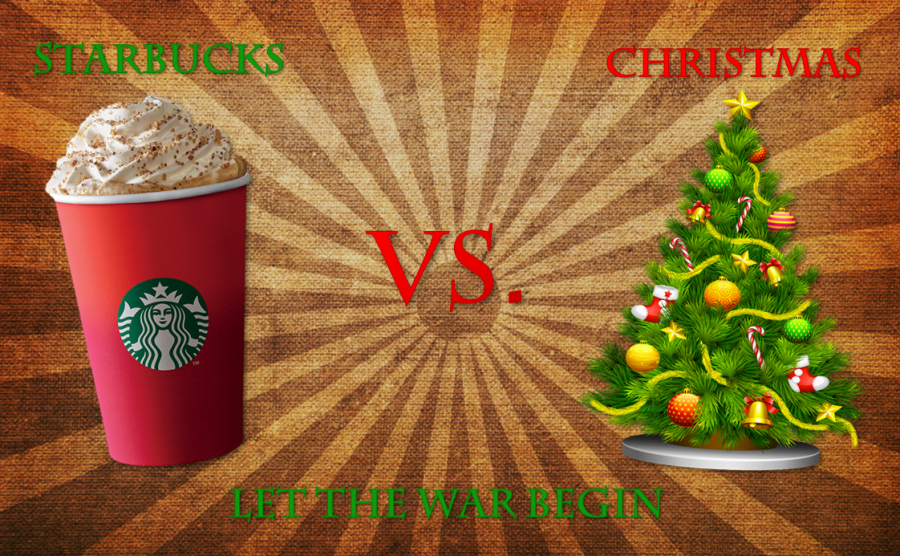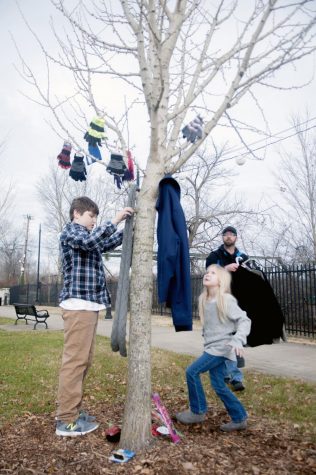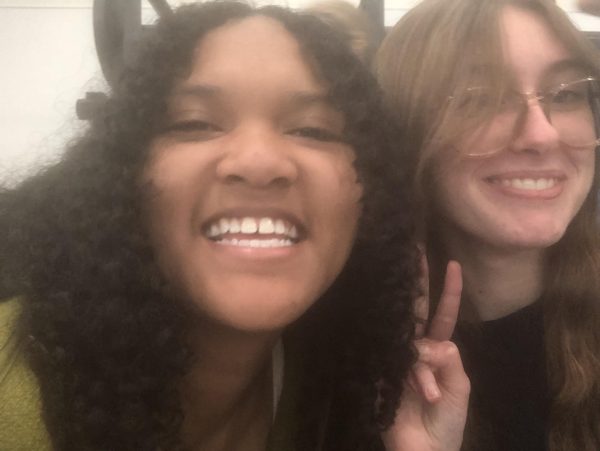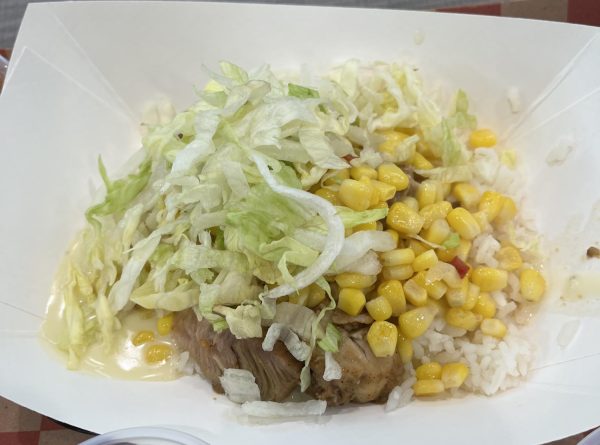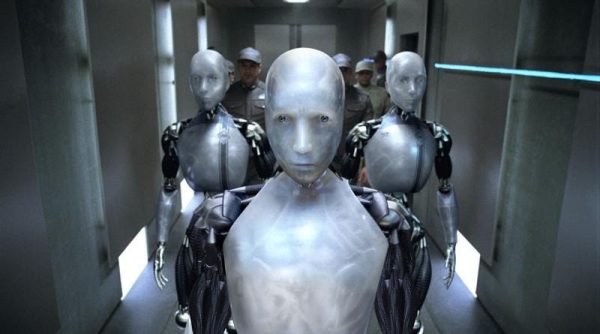Red Cups Raising Red Flags
Starbucks’ design for their 2015 holiday cup sparks religious controversy
December has begun, but this holiday season we are not only on the eve of the Hanukkah and Advent seasons. We are on the eve of war. More specifically: the War on Christmas.
In 2015, more than any other year in recent times, there is a staggering amount of debate and hostility surrounding the celebration of winter holidays. As America shows a general decline in fervor for Christianity and an increase in non-Christian religions, many devout, traditional Christians worry that their freedom to openly celebrate Christmas might be threatened.
These feelings truly came to the public sphere after a self-proclaimed “American evangelist, internet and social media personality” Josh Feuerstein filmed and posted a video berating a major corporation for persecuting Christians with their new packaging design.
So what wicked, antagonistic company committed this atrocity? Believe it or not, it was Starbucks, a Seattle-based coffee chain known for its exuberant and frankly sometimes overzealous festivity and cheer during the holiday season.
And the crime that Feuerstein was so horrified by? They made a red cup.
As many avid Starbucks-goers know, each year the company releases a special one-year-only holiday design for their cups to celebrate the winter and holiday seasons. Past years have featured snowmen (2012), starbursts (2014), and an array of sparkles, poinsettias, and Christmas ornaments (2013).
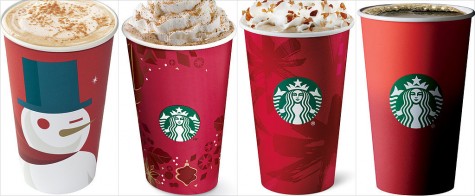
Image from: starbucks.popsugar.com
2015, however, brought a big surprise. Starbucks chose to radically simplify their design to a plain red cup (or a gradient red of poppy to cranberry, depending on who you ask). Starbucks claims that they intended for the design to be a “blank canvas” where customers could “tell their Christmas stories in their own way.” That means they can write “Merry Christmas,” draw a menorah, or even sketch a giraffe in a hat if that’s what they want to do. Feuerstein and his internet followers interpreted the decision in a different way, however.
“Did you realize that Starbucks wanted to take Christ and Christmas off their brand new cups?” asked Feuerstein in his video, also claiming, “they hate Jesus.”
In his view, the religiously unaffiliated company was attempting to deny Christianity by not featuring images sometimes associated with Christmas. Infuriated by the notion of being prohibited from celebrating one’s own religion, Feuerstein encouraged his followers to order coffee under the name “Merry Christmas” so that Starbucks workers of all religions would be forced to endorse only the Christmas holiday. Additionally, in his video he said, “And Starbucks, just to offend you, I made sure to wear my Jesus Christ shirt into your store,” then adds that he even brought his working handgun into the store in order to further express his anger.

However, as Greenwood senior Joe Moore points out, “Starbucks rarely has anything truly Christmas-related on their designs. They’ve had snowflakes and trees, but those are not related to Jesus.”
Indeed, almost all past Starbucks holiday designs in fact feature winter designs, such as snowmen and ice skaters, and the only images in the past five designs that are related to Christmas were Christmas ornaments in 2013, a reindeer in 2010, and vague brushstrokes that could be interpreted as either an undecorated Christmas tree or simply a pine tree, one of the few types of trees that typically grows in temperate climate zones in the winter, regardless of the occurrence of holidays.
Additionally, Washington Post columnist Alexandra Petri argues in a video of her own that most of the symbols that Feuerstein claims to be “Christ and Christmas” (Christmas trees, ornaments, and Santa Claus) are not actually Christian in origin. The birth of Jesus–the Christian root of the holiday–is believed to have occurred in the summer, but in Europe it was combined with and celebrated using the traditions of the Pagan winter solstice in order to keep the church from banning the Pagan holiday.

So how does the Greenwood student body stand on the issue? In interviews with Greenwood students and teachers, the general consensus seems to be . . . nobody cares.
“Is this really what’s important?” asks senior Reed Mattison. “Is fighting over a cup important?”
Every one of the surveyed students felt that Feuerstein was overreacting to the design choice. “This debate about decorations on a cup is pointless,” says Lauren Biggs, another senior.
“As a Christian myself,” adds Tyler Cunningham, “I don’t think that Starbucks is the best way to spread Christianity anyway. And I don’t think Starbucks is against Christianity.”
Even political science and government issues teacher Mr. Tolbert felt that the design is not dangerous enough to spend so much time and effort arguing about. “I don’t decide whether to go or not go [to a restaurant] because a company takes a position on a social issue,” he says, “unless it infringes on my own rights.”
This year, the Feuerstein video kicked off this year’s “War Against Christmas,” an annual movement protesting changes to Christmas traditions. However, with the recent terrorist attacks in Paris and Beirut, as well as the shooting in San Bernardino this weekend, “there are bigger issues in the world than whether Starbucks has a red cup,” says Graham Champion.
So, Greenwood appears largely in agreement on how to react to the controversy stirred up by Mr. Feuerstein: . . . don’t. Students and teachers plan to go on with their regular holiday celebrations, regardless of what religion they practice or holiday they celebrate. And what’s more, they will celebrate it together.
“Such a little matter was blown out of proportion,” senior Anjali Patel says. “It’s just a cup. All that matters is what goes into the cup.”

